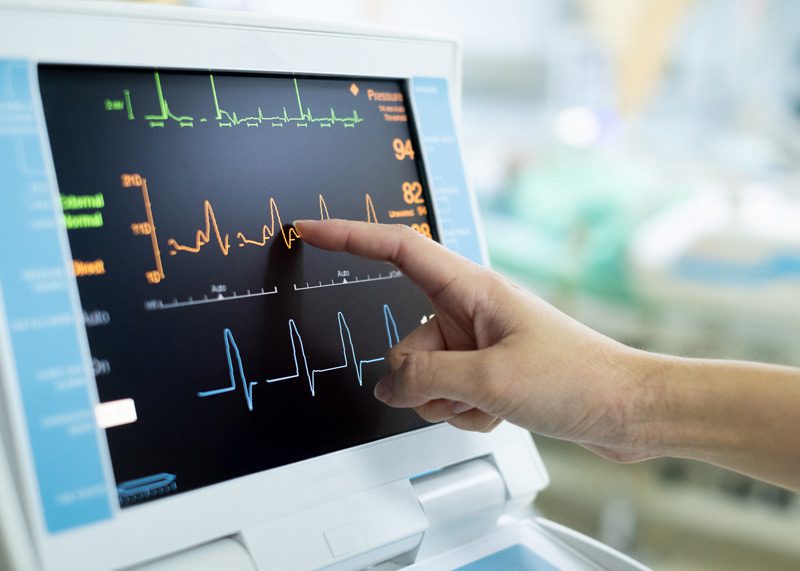

Vital signs monitoring involves tracking the body’s most basic functions: body temperature, pulse rate, and respiration rate. Healthcare professionals also track blood pressure, though it’s not considered a vital sign.
Vital signs are used to detect or monitor urgent medical problems in a medical setting, at home, or elsewhere.
Body Temperature
Body temperature fluctuates and varies depending on a person’s gender, recent activity, and food and fluid consumption; the time of day, and, in women, the stage of their menstrual cycle. Normal body temperature for adults can range from 97.8℉ to 99℉. Body temperature can be measured:
- Orally. A classic glass thermometer or a digital thermometer can be used with an electronic probe to measure body temperature.
- Axillary. Temperatures taken under the arm tend to be 0.3 to 0.4℉ lower than temperatures taken orally.
- Rectally. Using a glass or digital thermometer, body temperature can be taken rectally. However, temperatures tend to be 0.5 to 0.7℉ higher than when measured orally.
- By ear. The eardrum temperature reflects the body’s core temperature (the temperature of the internal organs). A special thermometer is used to measure body temperature by ear.
- By skin. Forehead temperature can also be measured using a specialized thermometer.
Fever (high temperature) or hypothermia (low temperature) causes abnormal body temperature. An abnormal temperature is when body temperature is one degree or more above the normal temperature of 98.6℉. If body temperature drops below 95℉, then the individual has hypothermia.

Pulse Rate
The pulse rate measures the number of times the heart beats per minute. The heart beats every time the arteries expand and contract with the flow of the blood. Checking the pulse not only measures the heart rate, but also can indicate heart rhythm and the strength of the pulse.
A healthy pulse for adults ranges from 60 to 100 beats per minute. Exercise, injury, illness, and emotions may cause fluctuations in pulse rate. Females ages 12 and older typically have faster heart rates than males. On the other hand, athletes who do a lot of cardiovascular training may have heart rates around 40 beats per minute and be in perfect health.
Respiration Rate
The respiration rate is the number of breaths taken per minute when at rest. The normal rate for adults is 12 to 16 breaths per minute. Measuring the respiration rate simply involves counting how many times the chest rises during breathing. Fever, illness, and other medical conditions may cause the respiration rate to increase. When measuring respiration, healthcare professionals are careful to note any difficulty breathing.
Blood Pressure
Blood pressure is the force of the blood pushing against the artery walls when the heart contracts and relaxes. During a heart beat, blood is pumped into the arteries, and as the heart contracts, the individual experiences the highest blood pressure. Blood pressure falls when the heart relaxes.
When measuring blood pressure, the higher number is called systolic pressure and refers to the pressure inside the artery when the heart is contracting and pumping blood through the body. The lower number is called diastolic pressure and refers to the pressure inside the artery when the heart is at rest and filling with blood.

